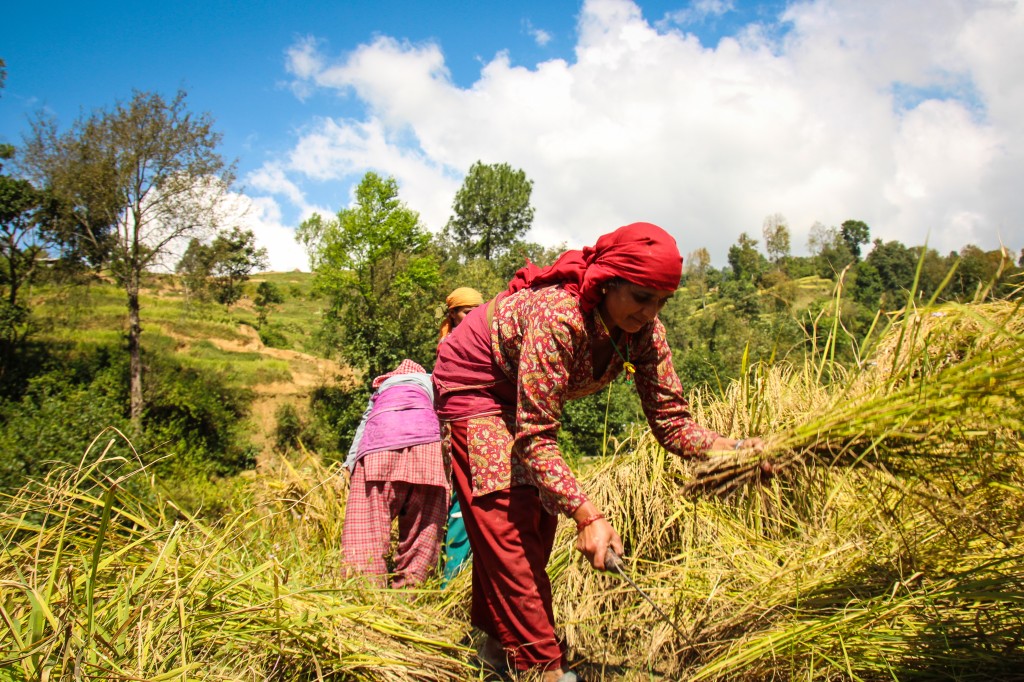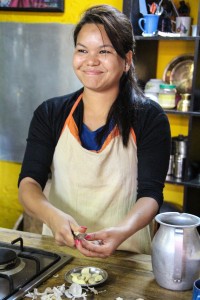
Over 80% of Nepal’s population live in rural areas, and 70% of the population works in the agricultural field. With hard-working days that often exceed 12 hours of manual work, it seems fitting that that Nepali population rely on a diet of protein rich lentils and beans, filling rice, and vegetables straight off the vine.
Sakuntala Rokka is a chef at Social Tours, Nepal, and has a lifetime of cooking experience, as well as 9 years experience as a professional chef. Originally from a rural village, Rokka recognizes the hard-working life of rural Napalese, and acknowledges the benefits of a hearty, filling meal to sustain people through a day’s work. Nepal’s traditional foods, like many regions in the world, are unique to the region’s climate and local produce, as well as the habits and routines of the people who call this land home.
Dal Bhat

“The main Nepali dish is Dahl Baht,” explains Rokka. “In some places, there’s no option for other food to eat. It’s like, every day… dal bhat,” she added.
This staple meal contains lentil soup (dal) and rice (bhat). It is often accompanied by curried vegetables (taraki), spicy, pickled vegetables (aachar), and meat on the rare occasion. Rokka describes that curries are rich in flavor, boasting spices such as cumin, coriander, turmeric, and chili powder, as do most Nepali dishes.

According to Rokka, it is not uncommon for families to eat Dal Bhat for two meals in the day, or three times on especially strenuous days such as rice harvest time. Similarly, strenuous trekking days are often referred to as “two dal bhat days” or “three dal bhat days” to reflect on the rigor of the day’s hike and the required nutrients. There is also a witty phrase used, “Dal Bhat power, 24 hour.”
Other Delicacies
Aside from the main dish, Nepal boasts several other delicacies. However, according to Rokka, many of these dishes are less common in the countryside, as ingredients are more difficult to find there and the lifestyle is more pressed for time.

Momos are a steamed or fried dumpling containing meat or vegetables, served with a dipping sauce. They are similar to their cousins, gyoza in Japan or jiaozi (potstickers) in China. Pakota is another popular snack item. It consists of fried, battered vegetables and curry flavor. Another favorite snack item us Sel Roti, a sweet, doughnut shaped fried bread made from rice flour. Thukpa is a noodle soup, consisting mostly of egg noodles, spinach, and several flavorings.
While rice is a staple ingredient in most meals, there are several replacements for the traditional steamed rice. Puri is a flat fried bread often served with curry in place of rice. Beaten rice (chiura) is a flat, dried, crunchy version of rice often used in mid-day snacks. Puff rice (syabaji) is a form of airy, dry rice, served at room temperature.
The variety of Nepali foods is vast, though not thoroughly explored in each home.
“In the city, if you have money, you can buy anything and eat. But in the village, this is no option,” Rokka explains. “For example, in the village, it is not possible to make momos. All people work on the farm, and then come back home and cook dal baht and eat fast.”
Sakuntaia Rokka teaches an eclectic group of tourists how to make Dal Baht at the Social Tours kitchen in Thamel, Nepal. Video by Victoria Nechodomu
